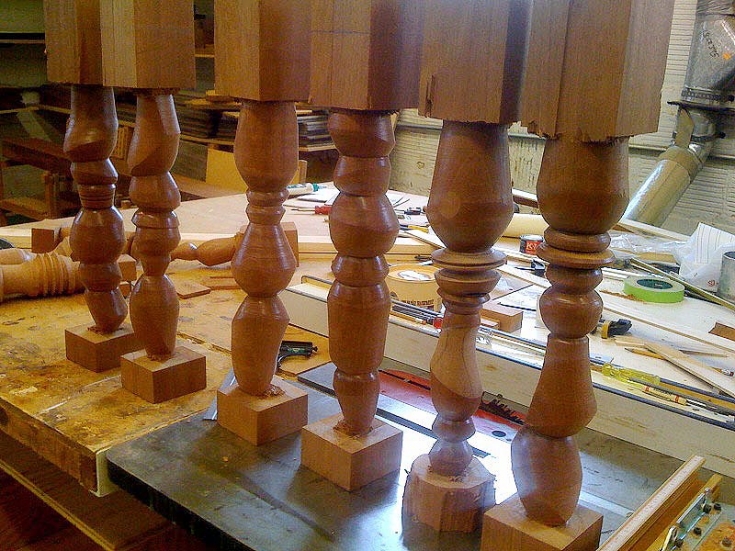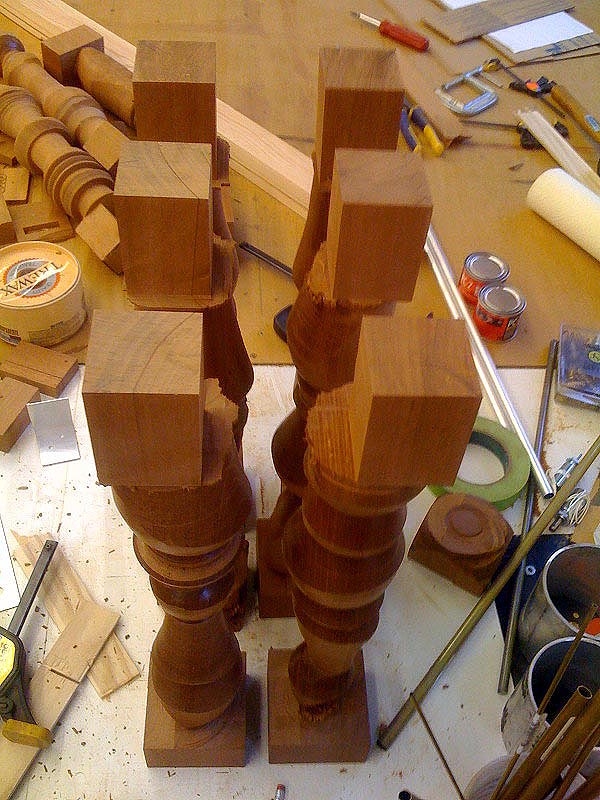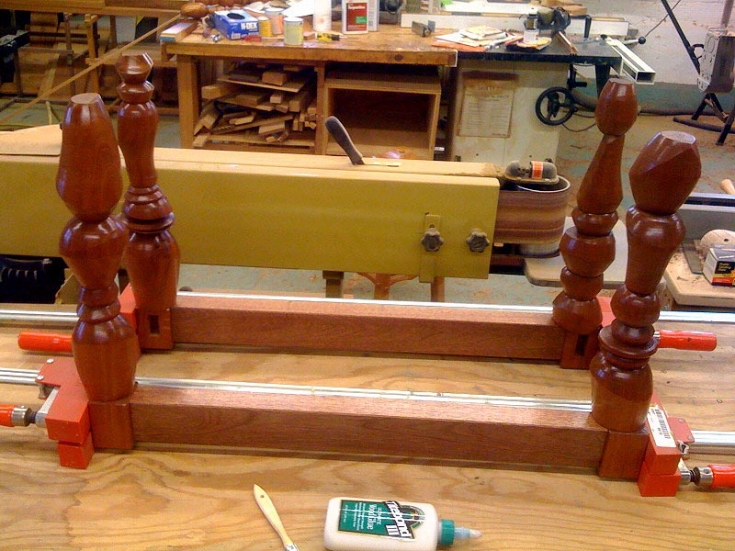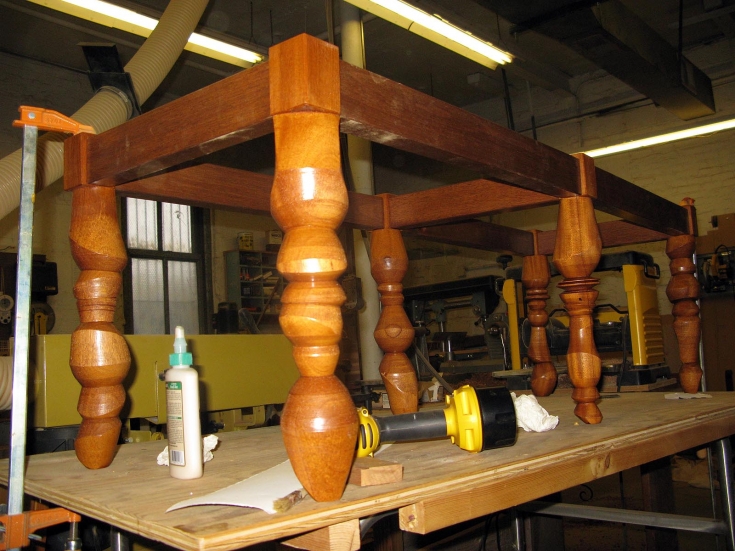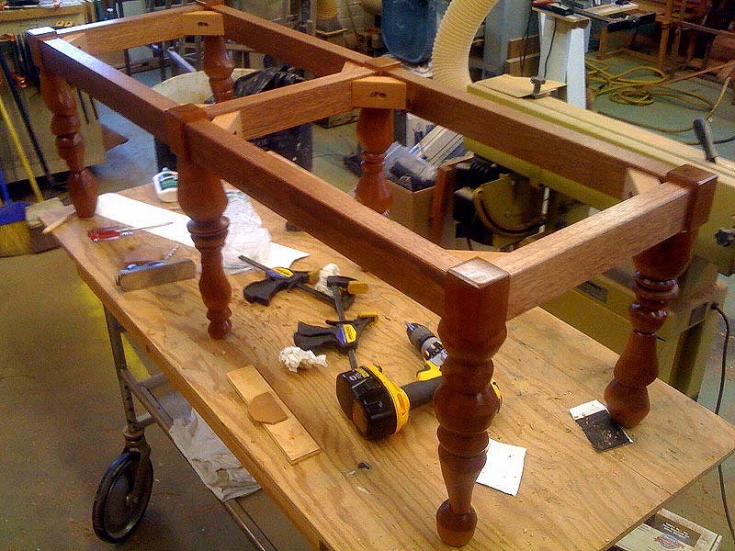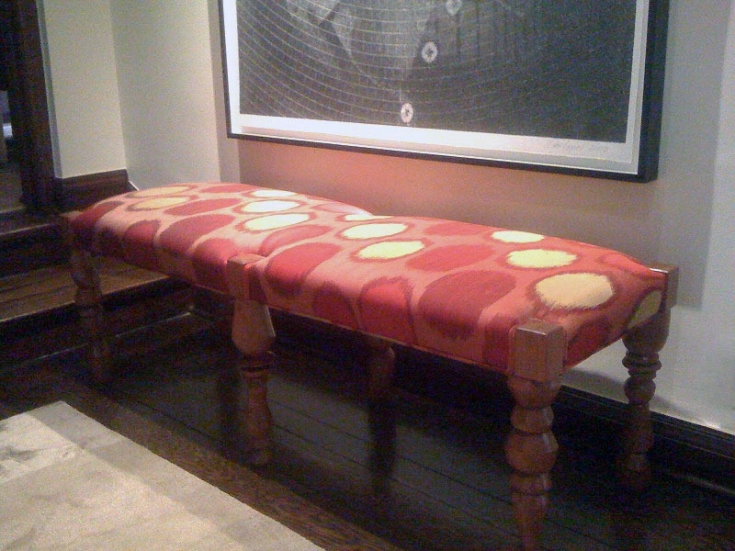This month I built a bench for our living room. It’s 18 inches high, 55 inches long, 19 inches deep and is the only upholstered furniture I’ve designed. Linda and I picked out the fabric in advance and I intended my six legs to reflect the ovals design of the fabric.
The six eccentric turnings which are the legs were VERY fun to carve! I used a ridiculously sharp one inch skew chisel to accomplish the turnings — what a satisfying activity! Because I repeatedly switched the centers of each workpiece, the knife was only in contact with the wood through part of each rotation (and it’s rotating FAST) — so with patience, a steady hand, and many pounds of paper-thin shavings removed, the completed turnings were shiny and smooth and ready for finish without sanding or anything else! Each cut was improvised and it felt to me that the leg called out to me each time to switch centers and continue — it seems trite to say this, but… I do SOOOoooo enjoy the so-called dialog between mind and object with each moment of process leading the way to the next.
Some years ago, while teaching a workshop in Japanese woodblock printmaking at Anderson Ranch Arts Center in Snowmass, Colorado one of my roommates and fellow instructors was Mark Sfirri. Mark was teaching a workshop in eccentric wood turning (multi-axis turning) and I liked him immediately. I got to see Mark’s slide lecture while I was there (his work is whimsical and great) and dropped by his workshop the next day to watch. I was fascinated (who wouldn’t be?)! I’ve executed another piece using techniques I recalled from my brief visit to Mark’s workshop that day – these are, in their way, homages to my week rooming with Mark. (watch Mark work:
http://www.youtube.com/watch?v=7uZNmvwHHIY )
One part of the project which made me very nervous whenever I thought about it was the significant hand-carving which would be required to perfect the intersections between the turnings and the rectangular solids of the leg tops. Because these were all very eccentric turnings, the curvy parts had to terminate well before the rectangular solid parts began. Because the location of the rectangular solid leg-top was improvised AFTER the turning was completed, it was all very touchy-feely and interactive decision making on the fly. Once I’d completed the turnings and then completed cutting the rectangular solid leg-tops from the turnings, I could begin to find the intersections of the rectangular solids with the curves by hand carving with a sharp flat chisel. I began on a Saturday morning and intended to take a break a few hours later. I was really getting into the gentle carving, making very thin shavings and approaching each intersection slowly and precisely. When it seemed I’d been at it an hour or two, I checked the time. Ten hours had flown by and I was already late for dinner! What a perfectly pleasant way to spend a day — very slowly, one shaving at a time, carving down to precisely the surfaces of the curves and planes. It was SO much easier than I’d imagined and my mind was SO light and happy as I worked out these shapes. Satisfying. Very satisfying.
The bench and upholstery all turned out decently enough and the bench feels (and is) strong and comfortable.
